|
|
|
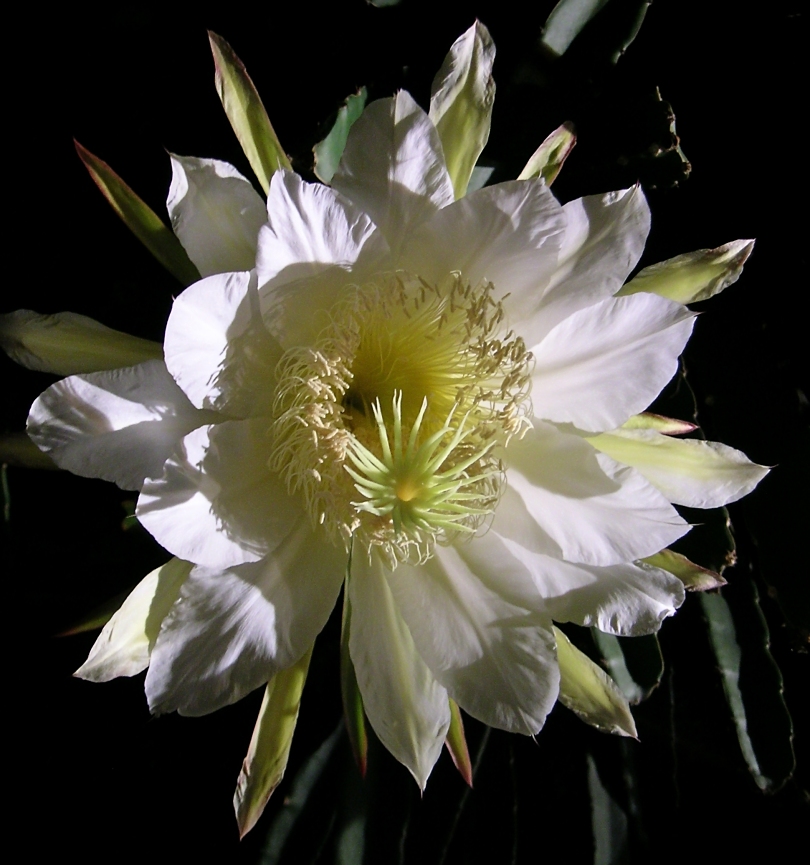
Copyright © by
Kada's Garden
Hylocereus undatus (Night-blooming cereus)
The flowers are huge ornate and beautiful and - as indicated by
the name - they appear only at night and soon close after the day
starts. The plant may grow out of, and over the ground or climb
onto trees using aerial roots.
|
|
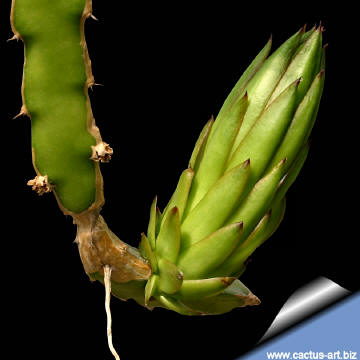
Unopened flower buds may be cooked and eaten as vegetables. |
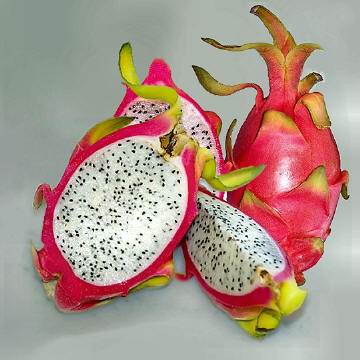
The fruit ( Pitaya or Dragonfruit) are delicious with a light melon-like
taste. |
|
. |
|
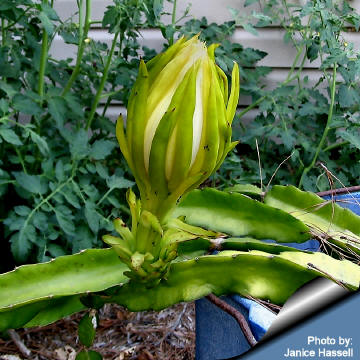 |
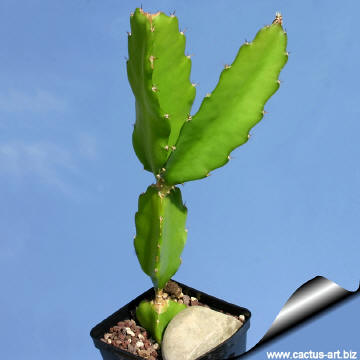 |
|
. |
|
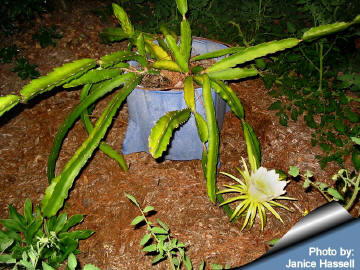
Photo
and © copyright by
Janice
Hassell |
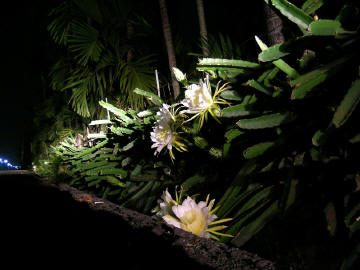
Copyright © by Kada's
Garden
|
|


Advertising
|
|
|
|
|
Family:
Cactaceae (Cactus
Family)
Scientific name:
Hylocereus undatus (Haw.) Britton &
Rose
Origin: Widely grown around the world in tropical regions,
the exact origin is unknown, but is likely from West Indies, Caribbean
basin, Southern Mexico through Belize, Guatemala, El Salvador and Costa
Rica.
Conservation status: Listed in
CITES appendix 2.
Common Names include: Night-Blooming Cereus, Pitaya,
Dragonfruit or Strawberry Pear.
Synonyms:
- Cereus undatus
- Cereus tricostatus
- Hylocereus tricostatus
|
|
Description: Hylocereus
undatus is a sprawling or vining, terrestrial or epiphytic cactus. They
climb by use of aerial roots and can reach a height 10 meters or more
growing on rocks and trees. They are very variable and closely related
to Selenicereus.
Stems: Green 3-winged, from a few cm up to 5 m long (in mature
plants), 4 to 7.5 cm margins undulate and horny wide with wings that are
2,5 to 5 cm wide.
Areoles: about 4.5 cm apart.
Spines: 1 to 3(- 5) conical spines up to 1 cm long (but usually
about 2-3 mm long).
Flowers: Flowers are ornate, fragrant and beautiful 25-35 cm long
by 30 cm across , white with green outer tepals and bracts.
Flowering
phenology: It bloom only at night, and usually the flower last
just one night, in tropical climate the plants can have up to 4-6
flowering/fruiting cycles per year. In temperate climate they bloom In
late spring to early summer
Fruit: If pollinated the Hylocereus produce edible red
fruits with white pulpa up to 12 cm long.
|
|

Copyright © by Kada's
Garden
The plant may grow out of, and over the ground or climb onto trees using
aerial roots.
|
|
|
|
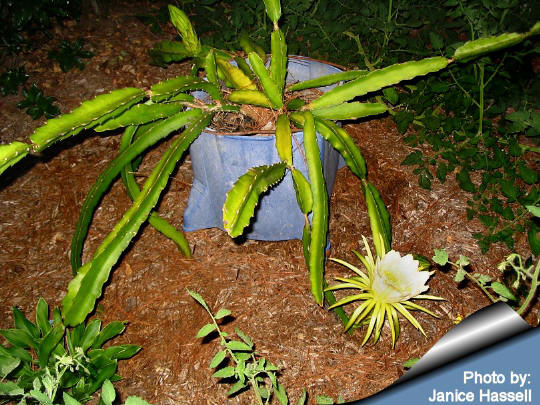
Photo
and © copyright by by
Janice
Hassell
|
|
Cultivation: Hylocereus
undatus grows best in dry, tropical or subtropical climates, it need
full sun to partial shade. Shade is sometimes provided in hot climates.
The plants aren't usually too picky as to soil type, but because of
their epiphytic nature, it is recommended to grow them in well-drained
soil mix that is supplemented with high amounts of organic material.
During the growing season (March-August), the plants are watered on a
regular basis, making sure that they never dry out completely. They are
fertilized on a monthly basis with a balanced fertilizer during this
period. In late August, water is restricted to about once a week until
January. Night temperatures at this time should be about 10° C. In
January or February, watering is stopped for a period of 4 weeks to aid
in flower formation. In March, regular watering is resumed and the plant
will flower in 6 to 8 weeks. Will tolerate temperatures to 45° C, and
short periods of frost, but prolonged cold will damage or kill the
plant.
Propagation: Hylocereus undatus is propagated by stem cutting or
(rarely) by seed in the spring. Seed should be sown in well-drained
compost and should germinate in 14 to 28 days at 18 to 21° C.
USE: It is used both as an ornamental vine and as a fruit crop -
the Pitaya or Dragonfruit. The fruit are round beautiful with an intense
colour and shape, of 1 kg or more and a delicious light melon-like
taste, often they red colored fruit with prominent scales. The thin rind
encloses the large mass of sweetly flavored translucent white or red
pulp and small black seeds. Some varieties are pinkish or yellow. To eat
the fruit serve chilled and cut in half. Scoop out the flesh and seeds
much like a kiwi fruit. It is also used to flavor drinks and pastries.
Unopened flower buds are cooked and eaten as vegetables.
|
|